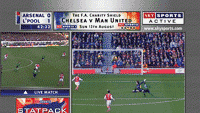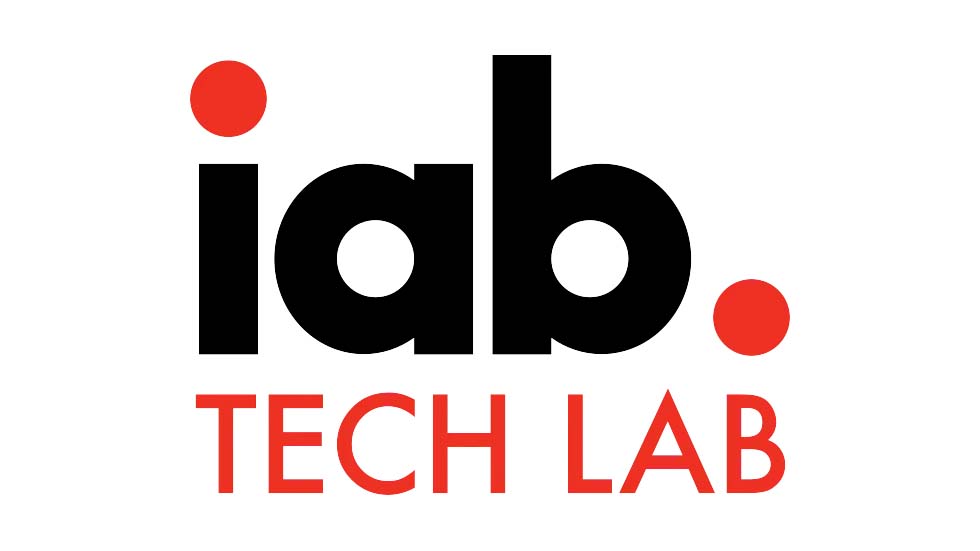Little “i,” BIG “TV”

Whatever happened to iTV?
Better yet, what is it? The big “TV” part is easy to grasp, but what does the little “i” designate?
At the height of the dot.com craze, that little “i” became a fashionable way to indicate that a product was linked in some way to the Internet. Long before the Internet wave crashed upon the landscape of our emerging digital world, however, the little “i” was used to designate what many felt would become the next big thing for the big “TV”… interactive! Then the Internet crashed the iTV party.
Sky Digital, the DBS service for Great Britain, has been offering interactive enhancements for a wide range of programming for several years. This image illustrates some of the interactive enhancements for sports programming.
Interactive TV is not a new idea. You might even say it has touched the life of this author since childhood and throughout his professional career. The first truly interactive television program, “Winky Dink and You,” aired from 1953 to 1957. The interactive element of the children's show was created through the use of special plastic sheets that a child could attach to the television screen and draw on with crayons. Yup, this was my first experience with “color” TV.
iTV surfaced again in Columbus, OH, in 1977. Warner Communications' Qube, offered thirty channels of television divided equally between broadcast, pay-per-view and original interactive channels. Although Qube's innovative programming was quite popular, it was not a sustainable business model because of the high costs of its set-top boxes and other equipment.
By the early ‘90s, as the transition to digital television moved to the center of my journalistic radar screen, iTV surfaced once again. The cable industry was gearing up to turn the big “TV” into a big business opportunity. In 1994, I attended the gala premiere of the Time Warner Full-Service Network (FSN) prototype in Orlando, FL. FSN was the world's most sophisticated and expensive interactive television test bed, offering interactive shopping, games, sports, news and an electronic program guide, as well as movies on demand.
The professional video industry's #1 source for news, trends and product and tech information. Sign up below.
The FSN concept proved to be too much too soon, but it did provide Time Warner with valuable research, which has led to the development and recent deployment in multiple markets of a new video-on-demand (VOD) service dubbed iControl.
The timing of the FSN experiment was ill-fated at a fundamental level. A videotape given to the press at the gala premiere set the stage:
“The benefits that the full-service networks will be offering to cable subscribers are essentially three elements: choice, control and convenience. You're going to have greater choice of what you want to watch. You're going to have much more convenience in that you'll be able to watch it when you want to watch it. And it will give you greater control because you'll have more options, more things to do, such as shopping or play games, that will allow you more time to do other things that you'd like to do.”
But what was Time Warner really saying? We are going to control your choices and collect a toll for everything that takes place on our networks.
What really happened with respect to these critical elements of the business plan?
Regarding choice, DBS burst onto the scene, offering the advantages of being digital and offering more choice than cable. And the Internet's World Wide Web rapidly evolved into a powerful standards-based platform for interactive communications.
Regarding control, the ability to manage and control your digital media experiences is moving to the edges of the network, the point of consumption, not a big server in a bomb-proof shelter under a mountain. The personal video recorder has emerged as the appliance that will enable you to watch what you want, when you want to watch it, although the big cable MSOs still believe that VOD services in thousands of headends can compete effectively with the PVR.
Regarding convenience, the question is for whom: the cable MSO or the consumer?
Consider the following from the videotape: “This world-class team of engineers, designers and programmers is charged with writing the FSN's operating software; the computer code that will enable all the different components of the system to talk to each other. Every person or company who wants to create an application for the Full-Service Network will use this common language. And developers will follow a style guide created by the FSN team.”
How convenient. The ongoing desire of cable MSOs to control the customer and collect tolls for every transaction on their networks ran headlong into the wild world of the Web. Content producers faced the prospect of creating different versions of their applications for every proprietary system vs. the global reach and open standards of the Web.
Faced with the challenge from the DBS “Death Stars,” cable was forced to invest in a $50 billion upgrade of their distribution networks to support digital services. One of the most positive aspects of these system upgrades is the ability to offer broadband Internet connections alongside digital TV programming, including two “low-overhead” interactive applications — the Electronic Program Guide (EPG) and VOD.
Cable systems — especially those here in the United States — have largely ignored the opportunity to use their digital transition to launch new iTV services such as those envisioned by Time Warner in 1994. There are two contributing factors.
First, the cost implications for the set-top boxes (STBs) needed to access digital services. The boxes used in the 1994 FSN experiment were Silicon Graphics workstations that cost about $5,000 each. Moore's law has trimmed the cost to support iTV applications to about $100, but that's $100 more than the cable systems are willing to invest today.
One major reason for the reluctance to invest in more capable STBs is the second factor. Cable MSOs are charging on average about $40 per month for a broadband Internet connection, and the customer usually pays for the cable modem.
So for now, instead of iTV, cable systems are offering the Internet and digital TV.
Where are the deployments?
iTV is alive outside of the United States, but it would not be honest to say that it is thriving. The problem is all too familiar. The business today is still dominated by proprietary solutions, even as standards have emerged from Europe's Digital Video Broadcast group (MHP), and the ATSC (DASE) and Open Cable (OCAP) here in the United States.
Several years ago the prospects for iTV looked promising. Several U.S. broadcasters tested the waters using what has become known as the two-screen approach to iTV; a traditional TV for the video program and the Internet for the interactive application.
The two-screen interface was an outgrowth of a phenomenon discovered by accident. Several TV networks noticed that when they displayed a Web URL during a live broadcast it would cause a huge, almost instantaneous spike in Web surfers accessing the Web site. How could this be? These people were watching TV, right?
Not exactly. A little research revealed that up to 40 percent of the TV audience was surfing the Web while watching TV.
But the two-screen approach is far from optimal. Real iTV enthusiasts are longing for the day when it will be possible to deliver the program and the interactivity to the big “TV” screen.
During the era of irrational exuberance in high tech, before the dot.com meltdown, significant investments were being made in iTV. As is often the case with emerging technologies, the major players opted for the development of proprietary solutions in the hopes of gaining control of the emerging markets.
As the new millennium dawned, I was touched once again by iTV, participating in a series of conferences that brought together the community working to deliver iTV to the masses. The first iMIX Conference in April of 2000 was upbeat; participants were optimistic about the future. By the time the third iMIX conference took place in March of 2001, the mood had turned sour. The question on the tip of every participant's tongue was “Where are the deployments?”
The answer was a deafening silence. When the high tech bubble burst, iTV was placed on the back burner. Challenges to the dominance of the lean back big “TV” business model had been dealt with. The big “TV” content producers and distributors boldly proclaimed that they had given iTV a close look. They noted the high cost to enhance TV programming with interactivity and questioned why anyone would want to interact with most programs.
Meanwhile, the Internet has been characterized as a major threat to the future of Hollywood, the music industry and broadcasting. It is portrayed as a haven for pirates who will share perfect copies of digital media content. It is a threat that MUST be controlled.
Craig Birkmaier is a technology consultant at Pcube Labs, and hosts and moderates the OpenDTV Forum.
Send questions and comments to:cbirkmaier@primediabusiness.com
